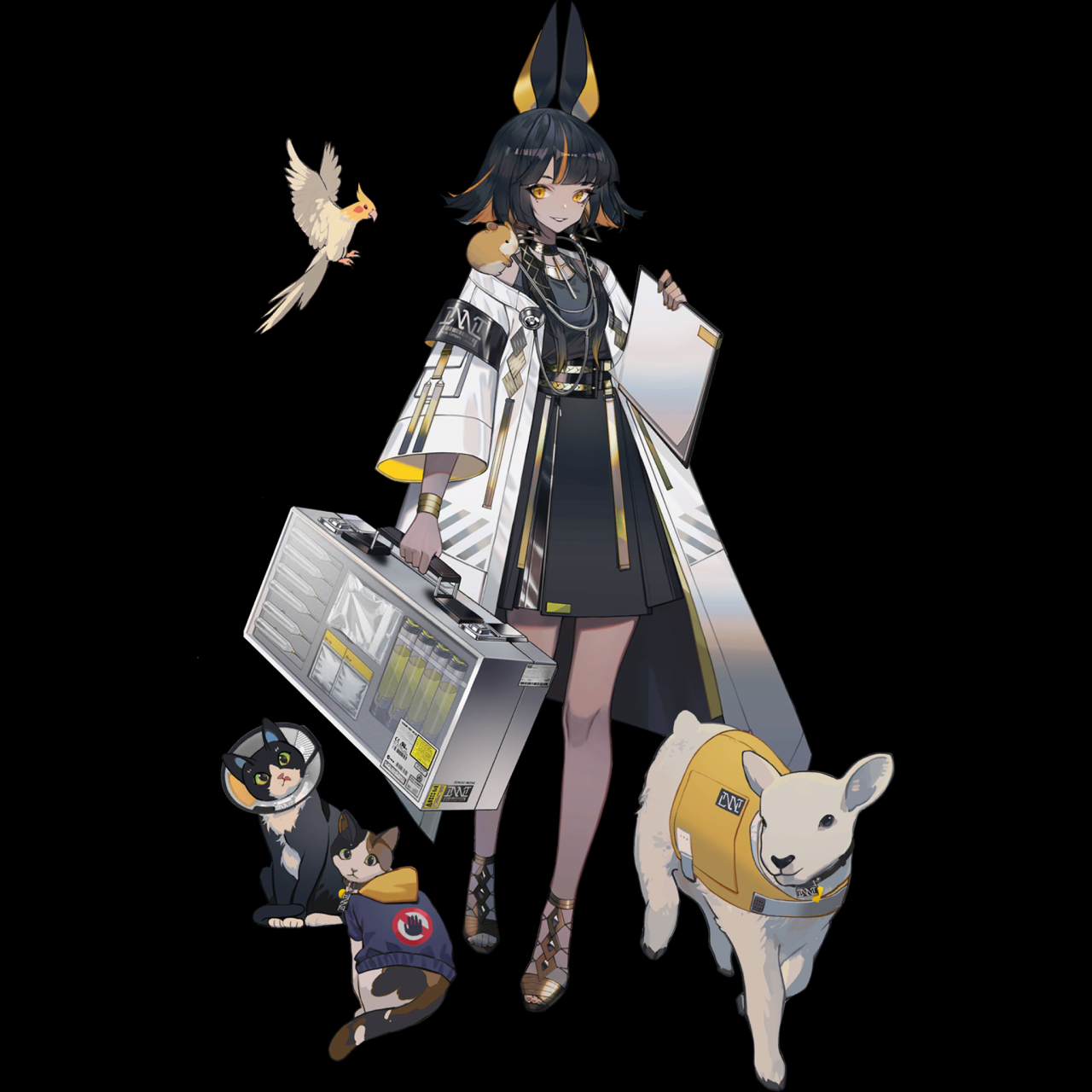Girls Games: From princess fantasies to epic adventures, the world of games designed for girls has exploded in popularity and diversity. This isn’t just about pretty graphics and pink themes anymore; we’re diving deep into the mechanics, narratives, marketing strategies, and societal impact of this rapidly evolving digital landscape. We’ll explore the top genres, the innovative game design pushing boundaries, and the crucial conversations around ethical marketing and the influence these games have on young players.
This exploration delves into the history of girls’ games, tracing their evolution from simple dress-up titles to complex narratives with diverse characters and inclusive themes. We’ll examine how social media fuels trends, how game mechanics cater specifically to female players, and the powerful role storytelling plays in shaping the experience. Get ready to uncover the fascinating world of Girls Games!
Popularity and Trends in Girls’ Games

The world of girls’ games has exploded in recent years, moving far beyond the simple dress-up and cooking simulations of the past. Driven by technological advancements and evolving social trends, the industry now offers a diverse range of engaging and immersive experiences catering to a broad spectrum of interests and age groups. Understanding the current popularity and trends within this dynamic market is crucial for both developers and players alike.
Top Three Popular Genres of Girls’ Games
The gaming landscape for girls is incredibly diverse, but certain genres consistently dominate the charts. These genres often blend creativity, social interaction, and a touch of escapism, resonating deeply with young female players. The top three currently include: simulation games (like life simulators and business management games), dress-up and fashion games, and creative games featuring elements of art, design, and crafting.
These categories often overlap, with many games incorporating elements from multiple genres to offer a richer and more engaging experience. For example, a fashion design game might incorporate elements of simulation, allowing players to manage their own fashion business.
Online versus Offline Girls’ Games Popularity
While offline games still hold a place, especially for younger players, the popularity of online girls’ games has undeniably surged. The ability to connect with friends, compete in leaderboards, and share creations online significantly enhances the overall gaming experience. This is largely due to the increased accessibility of high-speed internet and the rise of social media platforms, which facilitate communication and collaboration among players.
Online games often incorporate features like in-app purchases, which contribute to their overall revenue and continued development, leading to a positive feedback loop in terms of both popularity and refinement of gameplay.
Evolution of Girls’ Games Over the Past Decade
The past decade has witnessed a dramatic transformation in the themes and gameplay of girls’ games. Early titles were often simplistic and focused on stereotypically feminine activities. However, modern games are far more complex and diverse, reflecting the evolving interests and aspirations of young women. There’s a notable shift towards games that emphasize problem-solving, strategic thinking, and creative expression.
For instance, games featuring strong female protagonists in action-adventure settings or games centered around coding and technological innovation have gained significant traction, challenging traditional gender stereotypes. The rise of mobile gaming has also played a key role, making games more accessible and convenient for players.
Girls’ games often explore themes of creativity and collaboration, offering diverse gameplay experiences. For a unique blend of skill and fun, check out the addictive platformer Valto Jumpe , which challenges players with its dynamic levels. This game proves that even seemingly simple mechanics can lead to hours of engaging gameplay, making it a great addition to any girl gamer’s collection.
Impact of Social Media on Girls’ Games Popularity
Social media has played a pivotal role in boosting the popularity of certain girls’ games. Platforms like TikTok, Instagram, and YouTube are frequently used to showcase gameplay, tutorials, and creative content generated by players. Viral trends and challenges centered around specific games can rapidly propel them into the spotlight, generating significant interest and driving downloads. Furthermore, social media facilitates community building, allowing players to connect, share tips, and collaborate on projects within the game.
From classic dress-up games to the latest puzzle adventures, the world of Girls Games is vast and exciting. But for those girls who crave a bit more action, there’s a whole other field of play to explore: check out the intense competition and strategic gameplay in Soccer Games , a fantastic way to unleash your inner athlete. Then, after scoring some virtual goals, you can head back to the world of fashion, makeup, or any other Girls Game that catches your eye!
This creates a sense of belonging and enhances the overall gaming experience, contributing significantly to the long-term success and popularity of certain titles. For example, the popularity of certain mobile games skyrocketed after prominent influencers showcased them on platforms like TikTok, reaching a much wider audience than traditional marketing campaigns.
Game Mechanics and Design in Girls’ Games
The design of games specifically targeting girls often incorporates unique mechanics and aesthetics that cater to their preferences and interests. Understanding these nuances is crucial for developers aiming to create successful and engaging titles within this demographic. This section delves into the common and innovative mechanics employed, explores differences in level design and progression, and proposes a novel mechanic tailored to the preferences of female gamers.
Common Game Mechanics in Girls’ Games
Popular girls’ games often utilize specific mechanics to enhance engagement and align with the target audience’s interests. These mechanics frequently revolve around themes of creativity, customization, and social interaction. The following table highlights some common examples.
| Genre | Common Mechanic | Player Interaction | Example |
|---|---|---|---|
| Dress-up/Styling | Outfit Customization | Drag-and-drop interface, selection of clothing items, accessories, and hairstyles. | Covet Fashion |
| Life Simulation | Relationship Building | Dialogue choices, completing tasks for characters, managing relationships. | MySims |
| Puzzle | Matching/Swapping | Matching colored gems, candies, or other objects. | Candy Crush Saga |
| Hidden Object | Search and Find | Locating specific objects within cluttered scenes. | Hidden Expedition: Amazon |
Innovative Game Mechanics for Female Players, Girls Games
Beyond the common mechanics, innovative approaches are continually emerging to better engage female players. Games incorporating elements of narrative depth, character development, and meaningful choices are increasingly popular. For instance, games that allow for branching storylines based on player decisions offer a personalized experience. Similarly, the incorporation of crafting systems, where players create items to enhance their gameplay, can provide a strong sense of accomplishment and creativity.
The use of emotionally resonant storylines and relatable characters also plays a significant role in creating a lasting impact. Games such as Stardew Valley exemplify this trend by offering a blend of farming simulation, social interaction, and a rich, emotionally engaging narrative.
Level Design and Progression Differences
Level design and progression in girls’ games often differ from those targeted at other demographics. While action-oriented games might prioritize challenging combat encounters and escalating difficulty curves, girls’ games frequently focus on gradual progression, rewarding exploration and customization. The aesthetic appeal of the game world and the feeling of accomplishment from completing tasks are often prioritized over extreme difficulty.
For example, many girls’ games feature visually appealing environments with charming characters, while the difficulty curve is designed to be gentle, preventing frustration and encouraging continued engagement. This stands in contrast to games designed for male players, which sometimes emphasize a steeper learning curve and intense competition.
A Novel Game Mechanic: Empathy Engine
This proposed mechanic, the “Empathy Engine,” focuses on enhancing emotional connection within a narrative-driven game. It would involve a system where the player’s actions and choices directly influence the emotional state of Non-Player Characters (NPCs). For example, choosing kind words or performing helpful actions would raise an NPC’s happiness level, which could unlock unique dialogue options or rewards.
Conversely, unkind actions would lower their happiness, potentially leading to negative consequences within the narrative. The player would visually see the emotional state of the NPCs through subtle animation changes, such as facial expressions or body language. This mechanic would encourage players to consider the emotional impact of their decisions, fostering empathy and promoting a more nuanced and engaging gameplay experience.
The system would be implemented through a combination of dialogue choices, mini-games that test empathy, and subtle visual cues. The intended effect is to create a richer, more emotionally resonant gameplay experience that rewards kindness and thoughtful interaction.
Themes and Storytelling in Girls’ Games
The narratives in girls’ games have evolved significantly, moving beyond simplistic storylines to embrace complex themes and diverse characters. These games now offer opportunities for players to explore a wide range of experiences, fostering creativity, problem-solving, and emotional intelligence. The shift towards inclusive and relatable storytelling is a key factor in the increasing popularity and engagement with this genre.Diverse and Inclusive Themes in Girls’ Games showcase a departure from traditional stereotypes.
Games increasingly feature protagonists who are not only diverse in terms of race and ethnicity but also in terms of personality, abilities, and aspirations. They explore themes of friendship, self-discovery, social justice, environmental awareness, and creative expression. This broad spectrum allows for richer narratives and a more engaging gameplay experience.
Diverse and Inclusive Themes
Many modern girls’ games actively promote inclusivity and representation. For example, games might feature characters with disabilities, showcasing their abilities and resilience. Other games might center on themes of body positivity, challenging unrealistic beauty standards often portrayed in mainstream media. Environmental themes are also becoming increasingly common, with games encouraging players to make sustainable choices and learn about environmental conservation.
These themes resonate deeply with players, promoting empathy and a sense of social responsibility.
Common Narrative Structures in Girls’ Games
The effectiveness of narrative structures in girls’ games hinges on their ability to engage the player emotionally and intellectually. Several narrative structures have proven particularly successful.
A common approach is the friendship-focused narrative, where the story revolves around the development and challenges of friendships. These narratives often explore themes of loyalty, betrayal, and the complexities of interpersonal relationships. Another popular structure is the self-discovery narrative, where the protagonist embarks on a journey of self-improvement and personal growth. This structure allows for exploration of identity, self-esteem, and overcoming personal obstacles.
Finally, mystery-solving narratives offer engaging challenges and opportunities for critical thinking, captivating players through intriguing plots and puzzles. These structures, individually or in combination, enhance the overall gaming experience.
The Role of Characters and Relationships
Characters and their relationships are the heart of any compelling narrative, and girls’ games are no exception. Well-developed characters with relatable struggles and aspirations create an emotional connection with the player. The relationships between characters, whether friendships, romantic relationships, or familial bonds, provide opportunities for conflict, resolution, and emotional growth. The dynamics of these relationships can significantly impact the storyline, adding depth and complexity to the overall narrative.
For instance, a strong friendship might provide support and encouragement, while a strained relationship might create conflict and obstacles for the protagonist to overcome.
Short Story: Starlight Symphony
Elara, a young aspiring composer, lives in a world where music is created not through instruments, but through manipulating constellations. Each star holds a unique musical note, and by arranging them, composers create breathtaking symphonies. Elara, however, struggles. Her compositions lack the brilliance of others, and she feels overshadowed by her more talented peers. One day, while exploring a forgotten observatory, she discovers a hidden constellation, emitting a previously unknown, ethereal note.
This note, when woven into her compositions, transforms her music, imbuing it with a unique magic and beauty. Elara’s discovery not only revitalizes her own musical journey but also helps her forge unexpected friendships with other composers who had previously felt isolated in their own creative struggles. The story follows Elara’s journey of self-discovery as she learns to embrace her unique musical voice and the power of collaboration.
Marketing and Target Audience of Girls’ Games: Girls Games

The success of any game, especially those targeted towards girls, hinges on effective marketing strategies that resonate with the intended audience. Understanding the nuances of this demographic and employing ethical marketing practices are crucial for building a loyal player base and fostering a positive brand image. This section delves into the key characteristics of the target audience, examines marketing approaches for various genres, addresses ethical considerations, and proposes a sample marketing campaign.
The target audience for girls’ games is diverse, spanning a wide age range and encompassing varying interests. However, some common demographic characteristics emerge. Age is a primary factor, with games often categorized for younger girls (e.g., pre-teens), teens, and young adults. Interests vary significantly, influencing game genres. For example, younger girls might gravitate towards games featuring cute characters and simple gameplay, while teens may prefer more complex narratives and social interaction elements.
Key Demographic Characteristics of the Target Audience
Analyzing the target audience requires a multi-faceted approach. Age, as mentioned, is crucial. However, considering other factors like cultural background, socioeconomic status, and preferred gaming platforms provides a more comprehensive understanding. For example, a game focusing on horse riding might appeal more to girls in rural areas, while a game with a strong social media component might resonate better with urban teens.
Similarly, the accessibility of gaming devices (smartphones, tablets, PCs) significantly impacts the choice of platform and game type. Understanding these nuances allows developers to tailor their marketing messages and game features for maximum impact.
Comparison of Marketing Strategies Across Genres
Marketing strategies vary significantly depending on the genre of the girls’ game. Games focusing on fashion and beauty often utilize bright, colorful visuals and influencer marketing on platforms like YouTube and Instagram. These campaigns frequently feature prominent female YouTubers or Instagram personalities showcasing the game’s features and gameplay. In contrast, adventure or puzzle games might employ different strategies, focusing on showcasing the game’s narrative or challenging puzzles through engaging trailers and gameplay videos on platforms like Twitch and TikTok.
The choice of marketing channel and message is directly tied to the game’s genre and the platform preferences of the target audience.
Ethical Considerations in Marketing Girls’ Games
Marketing girls’ games to young audiences necessitates a strong ethical framework. Avoiding harmful stereotypes, promoting positive body image, and ensuring age-appropriate content are paramount. Games should avoid perpetuating unrealistic beauty standards or promoting unhealthy competition. Transparency in in-app purchases and responsible advertising practices are also essential to protect young players and their families. Compliance with advertising regulations specific to children’s media is crucial to avoid legal issues and maintain a positive brand reputation.
For example, clearly stating the cost of in-app purchases and obtaining parental consent before allowing access to certain features can help to mitigate ethical concerns.
Marketing Campaign for a New Girls’ Game: “Enchanted Academy”
Consider “Enchanted Academy,” a magical school simulator game aimed at girls aged 8-
12. The game combines elements of life simulation, puzzle-solving, and character customization. The target audience is segmented based on age (8-12) and preferred platforms (tablets and smartphones). The marketing campaign will utilize a multi-channel approach:
- Social Media Marketing: Engaging content on platforms like Instagram and TikTok featuring bright visuals, short gameplay videos, and interactive polls. Collaborations with family-friendly influencers will also be pursued.
- Online Advertising: Targeted ads on family-oriented websites and apps, focusing on the game’s magical theme and customization options.
- App Store Optimization (ASO): Optimizing the game’s app store listing with relevant s and compelling visuals to improve organic discovery.
- Public Relations: Press releases targeting family-focused media outlets and gaming websites.
This multi-pronged approach aims to reach the target audience through various channels, emphasizing the game’s fun and engaging features while adhering to ethical marketing practices.
Impact and Influence of Girls’ Games

Girls’ games, often overlooked in broader discussions of the gaming industry, wield significant influence on the development and experiences of young women. These games, encompassing a vast range from virtual dollhouses to complex strategy titles, impact social skills, creativity, and problem-solving abilities in unique ways. While offering numerous benefits, it’s crucial to acknowledge potential negative aspects and strategies for mitigating them.The influence of girls’ games extends beyond simple entertainment.
They provide opportunities for social interaction, collaborative problem-solving, and the development of crucial life skills. The digital spaces created by these games offer safe environments for experimenting with different social roles and navigating complex scenarios, fostering emotional intelligence and empathy.
Social Skills and Problem-Solving Abilities
Many girls’ games encourage collaboration and communication. Games like “Animal Crossing,” for instance, require players to interact with other players to trade items, complete tasks, and build relationships within the game’s virtual community. This fosters negotiation skills, compromise, and an understanding of social dynamics. Similarly, strategy games designed for girls, even those seemingly simple, often require players to plan ahead, anticipate opponents’ moves, and adapt to changing circumstances—directly enhancing problem-solving abilities.
The need to manage resources, allocate tasks, and overcome challenges within the game environment translates to real-world problem-solving skills.
Creativity and Self-Expression
Girls’ games often provide avenues for creative expression and self-discovery. Games featuring character customization, like many fashion or design-oriented titles, allow players to express their individuality and creativity through the design of avatars and virtual environments. These games act as digital canvases, enabling players to explore different aesthetics, experiment with styles, and develop a sense of personal style and identity.
Furthermore, games that involve storytelling or world-building, such as certain simulation or role-playing games, encourage imaginative thinking and narrative construction.
Potential Negative Impacts and Mitigation Strategies
While many girls’ games offer positive impacts, some potential negative aspects require consideration. Certain games might promote unrealistic body image standards or perpetuate gender stereotypes. For example, games that overly emphasize physical appearance or focus on romantic relationships may contribute to a narrow definition of success or self-worth. To mitigate these risks, parents and educators should encourage critical engagement with the game content, promoting discussions about realistic body images and healthy relationships.
Selecting games with diverse characters and storylines that promote positive values is also crucial. Open communication between parents and children about online safety and responsible gaming habits is essential to minimize any potential harm.
Culturally Significant Girls’ Games
Several girls’ games have achieved significant cultural impact. The “Sims” franchise, for example, has transcended its initial target audience to become a globally recognized phenomenon, influencing popular culture through its relatable portrayal of everyday life and its emphasis on social interaction and customization. The impact of “The Sims” is reflected in its longevity and the numerous spin-offs and cultural references it has generated.
Similarly, “Animal Crossing,” with its emphasis on community building and peaceful gameplay, has become a symbol of relaxation and escapism for millions of players globally, influencing design trends and even inspiring real-world community initiatives. These examples highlight the far-reaching influence that girls’ games can have beyond the digital realm.



